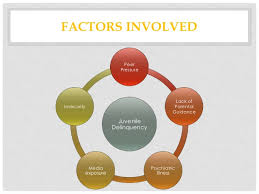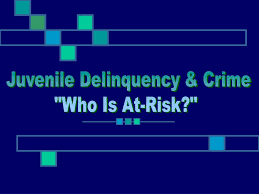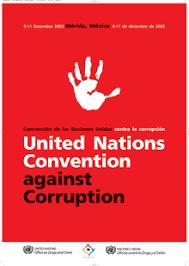Introduction

Juvenile delinquency in the United States is a complex and multifaceted issue that encompasses a range of behaviors exhibited by individuals under the age of 18 that are considered antisocial or criminal. These behaviors can include anything from truancy and underage drinking to drug abuse, gang involvement, vandalism, theft, and violent crimes. Understanding the causes, consequences, and responses to juvenile delinquency is essential for addressing this societal challenge. In this essay, we will explore various aspects of juvenile delinquency in the USA, including its causes, consequences, prevention measures, and the role of the justice system.
Introduction to Juvenile Delinquency
Juvenile delinquency refers to behaviors exhibited by young individuals that violate the law. While it is natural for adolescents to engage in risky or rebellious behaviors as part of their development, delinquency becomes a concern when it persists and escalates into criminal activity.
Causes of Juvenile Delinquency
Numerous factors contribute to juvenile delinquency, including:

Family Environment:
Dysfunctional family dynamics, parental neglect or abuse, and lack of parental supervision can increase the likelihood of delinquent behavior.
Peer Influence:
Adolescents may be influenced by their peers to engage in delinquent acts, especially if they seek acceptance or belonging within a group.
School Factors:
Poor academic performance, truancy, and school dropout are associated with higher rates of delinquency.
Community Environment:
Living in high-crime neighborhoods with limited access to resources and opportunities can expose youth to delinquent behaviors.
Substance Abuse:
Drug and alcohol use can impair judgment and increase the likelihood of engaging in criminal activities.
Consequences of Juvenile Delinquency
The consequences of juvenile delinquency can be severe and long-lasting, impacting both the individual and society:
- Legal Ramifications: Juvenile offenders may face arrest, detention, and court proceedings. Depending on the severity of the offense, they may be placed on probation, ordered to undergo rehabilitation programs, or incarcerated.
- Educational Disruption: Delinquent behavior often leads to school suspension, expulsion, or dropout, which can limit future educational and employment opportunities.
- Psychological Effects: Juvenile offenders may experience guilt, shame, and low self-esteem. Without proper intervention, these psychological issues can persist into adulthood.
- Cycle of Crime: Without effective intervention, juvenile delinquency can perpetuate a cycle of crime, leading to repeated offenses and a lifelong involvement in the criminal justice system.
Prevention and Intervention Strategies

Addressing juvenile delinquency requires a comprehensive approach that encompasses prevention, early intervention, and rehabilitation:
Family-Based Interventions:
Providing support services to at-risk families, such as parenting classes, counseling, and access to social services, can strengthen family bonds and reduce the likelihood of delinquent behavior.
School-Based Programs:
Implementing anti-bullying initiatives, conflict resolution training, and academic support programs can create a positive school environment and deter delinquency.
Community Outreach:
Engaging with community organizations, youth clubs, and recreational programs can provide alternative activities and positive role models for at-risk youth.
Juvenile Justice Reforms:
Promoting alternatives to incarceration, such as diversion programs, restorative justice practices, and rehabilitation services, can address the underlying causes of delinquency and reduce recidivism.
Role of the Juvenile Justice System

The juvenile justice system plays a crucial role in addressing delinquent behavior while also focusing on the rehabilitation and reintegration of young offenders:
Diversion Programs:
Diversion programs aim to divert low-risk offenders away from formal court proceedings and into community-based interventions, such as counseling, mediation, or community service.
Juvenile Detention Centers:
For more serious offenses, juvenile offenders may be placed in detention centers or residential facilities. These facilities should prioritize education, counseling, and skill-building to facilitate rehabilitation.
Juvenile Court Proceedings:

Historical Context
Legacy of Racism: The history of systemic racism in the United States has had enduring effects on communities of color, including African American, Hispanic, Native American, and other marginalized groups.
Inequitable Policies: Past and present policies, such as redlining, segregation, discriminatory lending practices, and unequal access to resources, have perpetuated socioeconomic disparities and contributed to higher rates of crime and delinquency in minority communities.
Disproportionate Minority Contact (DMC)

Prevalence: African American and Hispanic youth are overrepresented at every stage of the juvenile justice system, from arrest and detention to court processing and incarceration.
Arrest Rates: Studies consistently show that minority youth are more likely to be arrested for similar offenses compared to their white counterparts, even when controlling for factors such as socioeconomic status and offense severity.
Sentencing Disparities: Minority youth are more likely to receive harsher sentences and be transferred to adult court, leading to disproportionate rates of incarceration and longer periods of confinement.
Juvenile courts operate under a different set of procedures and principles than adult courts, with a focus on rehabilitation rather than punishment. However, juveniles may still face consequences for their actions, including probation, restitution, or placement in a secure facility.

Juvenile delinquency in the United States is a complex and multifaceted issue that encompasses a range of behaviors exhibited by individuals under the age of 18 that are considered antisocial or criminal. These behaviors can include anything from truancy and underage drinking to drug abuse, gang involvement, vandalism, theft, and violent crimes. Understanding the causes, consequences, and responses to juvenile delinquency is essential for addressing this societal challenge. In this essay, we will explore various aspects of juvenile delinquency in the USA, including its causes, consequences, prevention measures, and the role of the justice system.Addressing juvenile delinquency requires a comprehensive approach that encompasses prevention, early intervention, and rehabilitation:Conclusion
Juvenile delinquency remains a significant social concern in the United States, with far-reaching consequences for individuals, families, and communities. Addressing this issue requires a multifaceted approach that involves families, schools, communities, and the justice system working together to prevent delinquent behavior, intervene early, and provide rehabilitation opportunities for young offenders. By investing in prevention and intervention strategies that address the root causes of delinquency, society can help at-risk youth lead productive and law-abiding lives.


